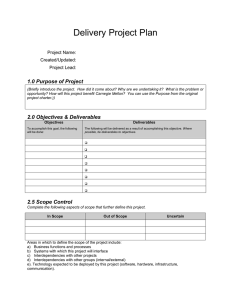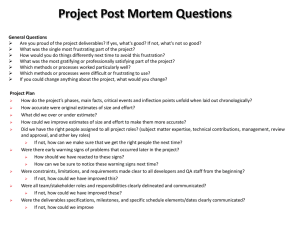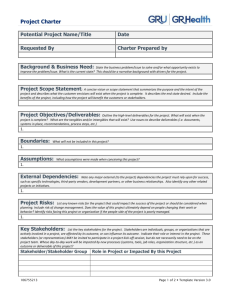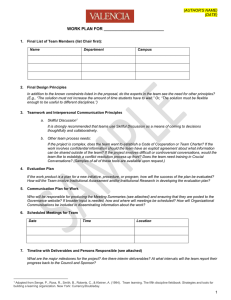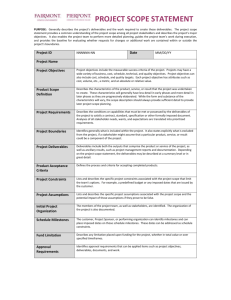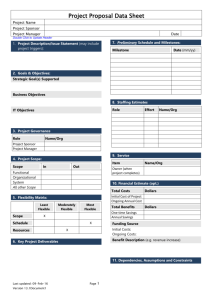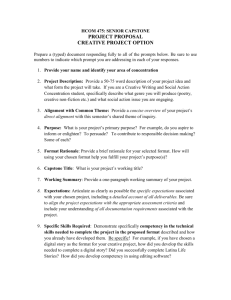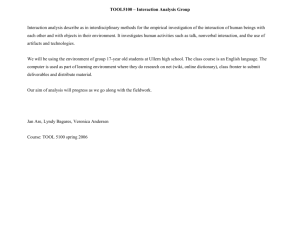Communications Plan - The University of Akron
advertisement
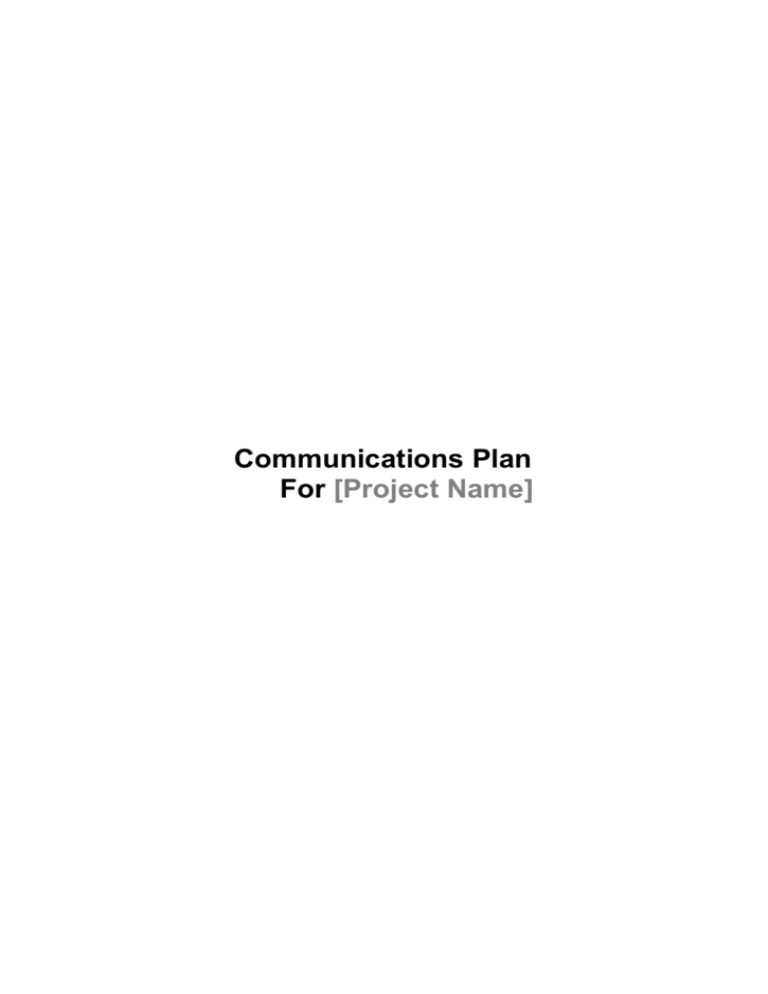
Communications Plan For [Project Name] © 1 Summary This Communications Plan has been created to detail the process by which the Academic Community will be engaged in the Project Management Process at The University of Akron. 2 Communications Objectives The top 3 objectives that are to be achieved by the execution of this Communications Plan are: √ √ √ Identification of Key Stakeholders Increased Institutional Awareness of projects and their status Improving communications between Academics and Operations 2.1 Communications Guidelines √ √ √ √ √ All messages will be audience-specific All key messages will be communicated formally All messages will be distributed through an appropriate channel All critical communications must be approved by management prior to distribution The Project Management Office will listen and act on feedback 3 Stakeholders 3.1 Target Audience Based on communications requested, the audience will include membership of the following: √ √ √ √ √ √ √ √ √ Board of Trustees University Vice Presidents Council of Deans University Council Faculty Senate Technology Committees Project management team (project manager, project leaders) Project team members Project management office 3.2 Stakeholder Requirements List each stakeholder group in the table below then describe the information that they need to receive and the timeframe in which they need to receive it. Name Role Information Project Sponsor √ √ √ √ √ √ Project Manager Timeframe Summary project status Monthly Critical risks and issues Budget & timeline performance Detailed project status Weekly All risks and issues Resource, supplier, procurement budget & timeline performance 2 Safety Auditor √ Level of safety compliance of all 1st each month deliverables produced You will want to check with each stakeholder that the above information requirements meet their needs before you continue. 3.3 Key Messages Most teams distribute a wide range of communications messages to their stakeholders. There are usually however, a handful of key messages that are communicated to the majority of stakeholders on a regular basis. If there are regular messages which are critical to the success of the team, then state those messages here. For instance, in the case of a project team, the key messages may be the: √ √ √ √ √ Project status: Whether the project is currently operating within the agreed schedule, budget and quality targets. Project issues: The impact of the issues currently affecting the project and the actions taken to resolve them. Project risks: The high level risks which may affect the project and the actions taken to mitigate, avoid or reduce them. Project deliverables: The deliverables completed to date and the items which are scheduled for completion within the next reporting period. Project resources: The overall level of resourcing in relation to the Resource Plan and any resource constraints currently affecting the project. These key messages will be woven into the communications events that you are about to schedule for your team. 3 3.4 Communications Events Then complete the following table with the Communications events listed in the schedule above. Link the events by the common “ID” used. By describing these events in as much depth as possible, you can help your team members to complete the events on time. ID Event Description Purpose Frequency Date(s) 3 Project Team Meeting xx/yy/zz Project Board Meeting To keep the team informed of the project status and ensure that issues, risks or changes are raised early on. To determine whether the project has been completed and met the final requirements of the customer. Weekly 4 Meeting involving all team members, to discuss the work in-progress / recently completed / coming up Formal meetings held with the Project Board to assess the overall status of the project. End of project xx/yy/zz 5 Phase Review Meeting Formal meeting held at the end of each phase, to determine whether the quality of the deliverables produced is satisfactory. To control the progress of the project through each phase in the lifecycle and boost its chance of success. End of each major phase xx/yy/zz © 4 3.5 Communications Responsibilities Complete the following responsibilities matrix. In this matrix, list each of the people responsible for the communications events above and describe their responsibilities in taking part in these events using the key provided. Again, use the unique ID to link the participating parties to the communication events listed above. The table has been partly completed for the above project example. Key: A = Accountable for communication event (as marked in green) R = Receives communications materials, takes part in meetings (as marked in yellow) M = Monitors communications process and provides feedback (as marked in orange). ID Project Sponsor 3 Project Manager Project Leader Project Member A R R 4 A R R 5 A R R © Quality Manager R Procurement Communications Manager Manager R M Profit Office Manager Other Project Resource R R Other External Body M R M 5
